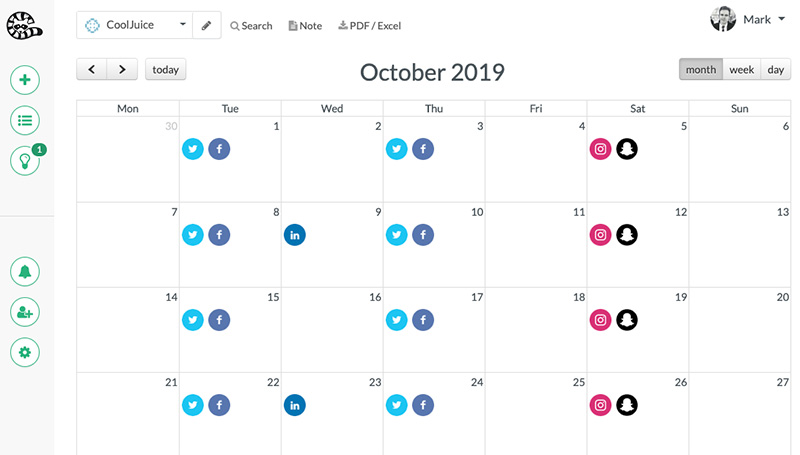Content creation has become a fundamental aspect of successful marketing strategies in today’s digital landscape. However, developing and executing an effective content marketing plan requires careful organisation and planning.
This is where a content calendar comes into play. A content calendar is a helpful tool that helps businesses streamline their content creation process, ensure consistency, and maximise their marketing efforts.
This guide will explore the key steps in content calendar creation to help you establish a solid foundation for your content marketing strategy.
1. Set Clear Goals and Objectives
Before diving into content calendar creation, it’s essential to establish clear goals and objectives for your content marketing efforts. Define what you want to achieve through your content: increasing brand awareness, driving website traffic, generating leads, or engaging with your audience. With specific goals, you can tailor your content calendar to align with these objectives and measure your success effectively.
2. Understand Your Target Audience
Understanding their needs, preferences, and pain points is crucial to create content that your target audience will appreciate deeply. Conduct thorough market research, analyse your existing customer base, and create buyer personas to gain insights into your audience’s demographics, interests, and challenges.
Incorporate this knowledge into your content calendar to ensure that you produce relevant and engaging content that addresses their specific needs.
3. Identify Content Themes and Topics
Once you clearly understand your target audience, identify the key themes and topics that align with your brand and resonate with your audience’s interests. Brainstorm content ideas that provide value, educate, entertain, or solve problems for your audience.
These ideas will form the foundation of your content calendar, guiding your content creation efforts and ensuring a diverse and engaging content mix.
4. Choose the Right Content Calendar Format
Selecting the right content calendar format is crucial for effective planning and organisation. Whether you prefer a digital tool, a spreadsheet, or a physical planner, choose a format that suits your team’s workflow and facilitates collaboration.
5. Plan Content Types and Formats
Consider the different types and formats of content you want to craft, such as blog posts, videos, social media posts, infographics, or podcasts. Each content type requires specific resources, timeframes, and distribution channels.
Incorporate these considerations into your content calendar, ensuring a balanced mix of content formats to cater to various audience preferences and maximise engagement.
6. Establish a Consistent Posting Schedule
Consistency is king in content marketing. Establish a consistent posting schedule to build trust with your audience and maintain their engagement. Determine the frequency of your content publication based on your available resources and the expectations of your target audience. This could be daily, weekly, biweekly, or monthly, depending on your capacity and the nature of your content.
7. Allocate Resources and Set Deadlines
Effective content calendar creation involves allocating resources and setting realistic deadlines. Identify the team members responsible for content creation, editing, design, and promotion.
Assign clear deadlines for each task to ensure accountability and timely delivery. Additionally, consider any external factors, such as holidays or industry events, that may influence your content schedule.
8. Incorporate Content Promotion and Distribution
A content calendar is not just about content creation; it should also include content promotion and distribution plans. Determine which channels and platforms you will use to distribute your content, such as your website, blog, social media platforms, or email newsletters.
9. Monitor and Analyze Performance
Regularly monitor the status of your content to assess its effectiveness in achieving your goals. Record key metrics such as website traffic, engagement, conversion rates, and social media metrics.
Use tools like Google Analytics to gather valuable insights and refine your content calendar accordingly. Once you have your data all sorted out, use them to optimise your content strategy and maximise its impact.
Conclusion
A well-structured content calendar is an indispensable tool for successful content marketing. By following the tips in this article,, you can create a robust content calendar that drives results.
Adaptability and flexibility are essential as you learn from your content performance and refine your strategy over time. Embrace the power of a comprehensive content calendar to elevate your content marketing efforts and achieve your business objectives.
Unlock the full potential of your content strategy with ContentCory! Sign up now and streamline your planning process with our powerful content calendar tool. We offer a 14-day trial, no credit card required.


